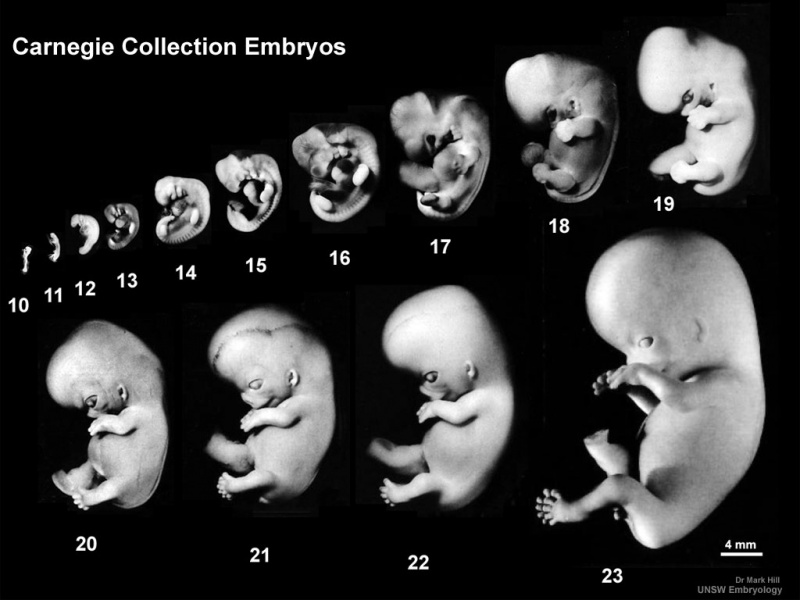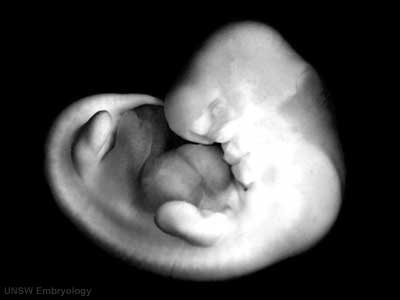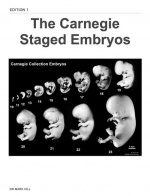Carnegie stages
The Carnegie stages or embryonic stages are a classification of the human embryo in 23 stages during the eight weeks of embryonic from fertilization to the beginning of the fetal period.
The staging was in 1942 by George Linius Streeter ( 1873-1948 ), an American embryologist, developed at the Carnegie Institution for Science, Baltimore. After an embryo is assigned according to its morphological features of the various stages. He called these stages originally horizons. Their findings gained he and his staff in rhesus monkey embryos, as early human embryos were not available.
1987, the classification by Ronan O'Rahilly and Fabiola Müller R. of the University of California was completed and the stadiums now referred to as embryonic or Carnegie stages.
Staging after development allow a more accurate classification than would be possible on the size or age, although the relationship between the stadiums and the embryo size is fairly constant.










